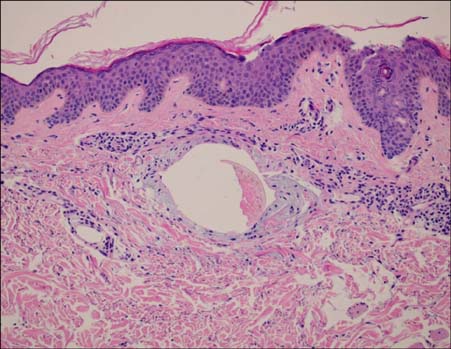Ann Dermatol.
2014 Aug;26(4):534-535. 10.5021/ad.2014.26.4.534.
Cutaneous Pili Migrans
- Affiliations
-
- 1Department of Dermatology, Kangbuk Samsung Hospital, Sungkyunkwan University School of Medicine, Seoul, Korea. wisdom0920@naver.com
- 2Department of Pathology, Kangbuk Samsung Hospital, Sungkyunkwan University School of Medicine, Seoul, Korea.
- KMID: 2265604
- DOI: http://doi.org/10.5021/ad.2014.26.4.534
Abstract
- No abstract available.
Figure
Reference
-
1. Yaffee HS. Imbedded hair resembling larva migrans. AMA Arch Derm. 1957; 76:254.
Article2. Sakai R, Higashi K, Ohta M, Sugimoto Y, Ikoma Y, Horiguchi Y. Creeping hair: an isolated hair burrowing in the uppermost dermis resembling larva migrans. Dermatology. 2006; 213:242–244.
Article3. Ishida Y, Matsubara K, Takai M, Horiguchi Y, Yoshikawa Y. A case of 'creeping hair' resembling cutaneous larva migrans. Clin Exp Dermatol. 2009; 34:256–257.
Article4. Luo DQ, Liu JH, Huang YB, He DY, Zhang HY. Cutaneous pili migrans: a case report and review of the literature. Int J Dermatol. 2009; 48:947–950.
Article5. Franbourg A, Hallegot P, Baltenneck F, Toutain C, Leroy F. Current research on ethnic hair. J Am Acad Dermatol. 2003; 48:6 Suppl. S115–S119.
Article



